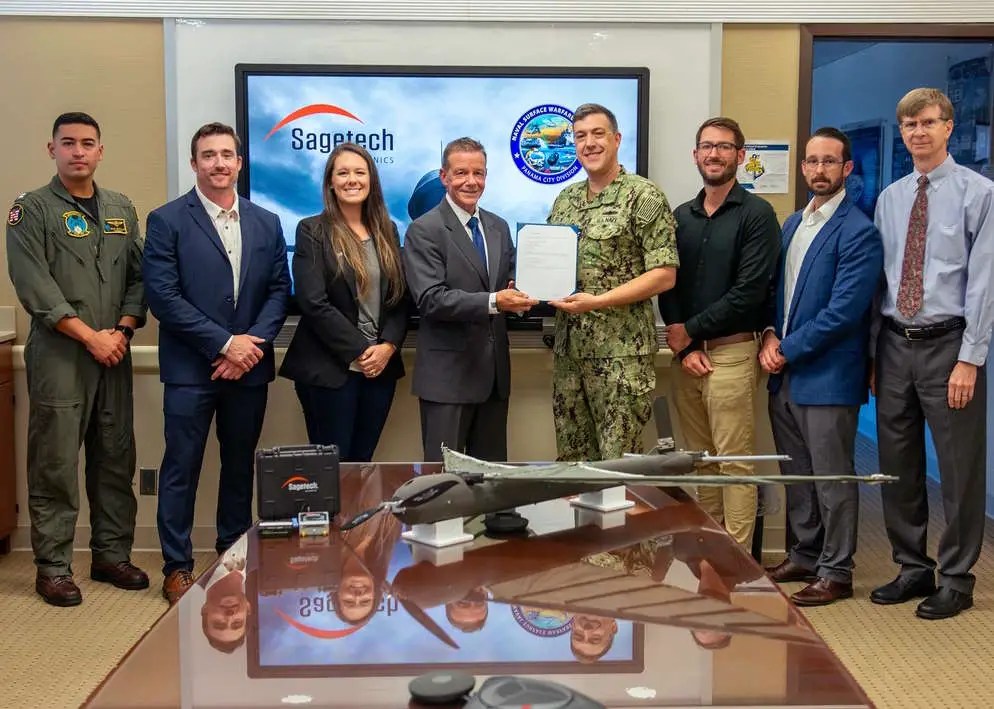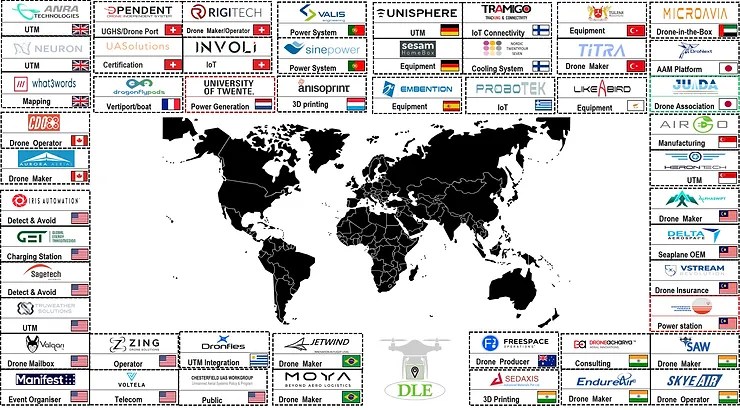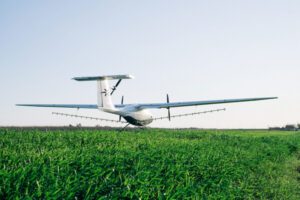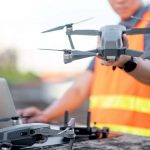Drones have become increasingly popular over the past few years, with beginners and hobbyists alike enjoying the thrill of flying these cutting-edge machines. With so many options available on the market, it can be overwhelming for a beginner to know where to start. Whether you’re looking to capture stunning aerial footage, race with friends, or have fun flying around, there’s a drone for you.
In this ultimate guide, we’ll take a deep dive into the best drones for beginners, breaking down the basics and helping you navigate the vast array of options available. From understanding the different types of drones and their uses to setting a budget and identifying the features that matter most, we’ve got you covered. We’ll also look at the top drones for beginners in 2023 and offer recommendations based on your specific needs and budget.
Are you ready to join the ranks of drone enthusiasts and soar to new heights? Let’s get started!
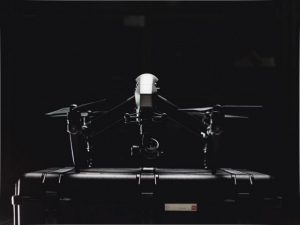
Understanding Drone Basics
Before deciding on the best drone for you, it’s important to understand the basics of drones and their uses. Drones come in many shapes, sizes, and capabilities, so it’s important to know what you’re looking for.
First, let’s look at the different types of drones available.
- Camera Drones: These drones are typically larger and more expensive, equipped with high-quality cameras that allow you to capture stunning aerial footage. They’re often used by photographers, videographers, and filmmakers but are also popular among hobbyists who want to take their photography to new heights.
- Racing Drones: These small, lightweight drones are built for speed and agility. They’re often used for competitions and races and have high-quality cameras that capture fast-paced action. They are also great for enthusiasts who want to experience the thrill of drone racing.
- Toy Drones: These drones are designed for fun and entertainment rather than professional use. They’re often smaller and less expensive than camera and racing drones and are perfect for beginners who want to get a feel for flying a drone before investing in a more advanced model.
- Industrial Drones: These drones are designed for more heavy-duty tasks and industries, including agriculture, construction, and search-and-rescue. They are typically more expensive and have more advanced features, such as long battery life, long range, and the ability to lift heavy payloads.
Once you’ve decided on the type of drone you’re interested in, consider the most important features. Some of the essential features include the following:
- Flight Time: This is how long a drone can stay in the air before recharging. Typically, the flight time ranges from 15 to 30 minutes, but more expensive drones can last longer.
- Range: This is the maximum distance a drone can fly from the controller before losing connection. Depending on the drone, the range can vary from 50 meters to several kilometres.
- Camera Quality: If you’re looking for a camera drone, it’s critical to consider the quality of the camera and whether it meets your needs. Features include resolution, frame rate, and the ability to adjust camera settings.
- Speed: This is the maximum speed at which a drone can fly. Racing drones typically have higher speeds than camera or toy drones, with some reaching speeds up to 60 miles per hour.
- Obstacle Avoidance: Some drones are equipped with sensors to detect and avoid obstacles while flying. This feature is handy for beginners, as it helps to prevent crashes and accidents.
- GPS: This feature allows a drone to be operated using GPS coordinates, making it easier to fly and control. Some drones also have Return to Home (RTH) function, which allows them to fly back to their takeoff location.
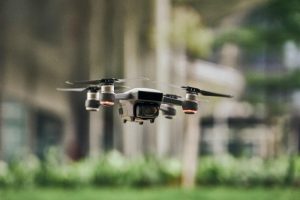
Budget Considerations
When buying a drone, the cost is an essential factor to consider. Drones can range in price from a few hundred dollars to several thousand dollars, depending on features and capabilities. As a beginner, setting a budget and getting the most value for your money is important.
First, it’s essential to determine how much you’re willing to spend. Consider how often you’ll use the drone and what you’ll use it for. If you’re looking for something fun to fly around in your backyard, a toy drone might be your best option. On the other hand, if you’re looking to capture high-quality aerial footage, a camera drone might be more appropriate, even though it may be more expensive.
Next, consider what features are most important to you. As you’ve seen in the previous section, some features can greatly vary in price. For example, obstacle avoidance and GPS technology are more expensive but only sometimes necessary for a beginner. On the other hand, a good flight time and range can be crucial.
It’s also worth considering buying used drones as long as they are in good condition and maintained properly. This can be a great way to save money and still get a good drone, but always check the reviews of the model you’re interested in and research what to look out for before making a purchase.
Finally, keep an eye out for deals and sales, especially during the holiday season. Many retailers offer discounts on drones during this time, so it can be an excellent opportunity to get a great deal.
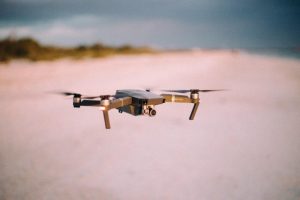
Features to Look For
Now that you understand the basics of drones and have a general idea of what you’re looking for, it’s time to dive into the specific features you should look for when choosing the best drone.
- Stability Control: This feature helps to keep the drone steady and stable in the air, making it easier to fly and control. It’s significant for beginners, as it allows you to focus on learning how to fly rather than trying to stabilize the drone.
- Easy Controls: Look for a drone that is easy to control, with intuitive controls and a responsive joystick. This will make the learning process smoother and more enjoyable.
- Altitude hold: This feature allows the drone to maintain a consistent altitude, making it easier to capture stable footage.
- Headless mode: This feature allows you to fly the drone without worrying about its orientation. This is especially useful for beginners who are still learning how to fly.
- LED Lights: LED lights on the drone can help fly at night or in low-light conditions. They also make it easier to keep track of the drone’s location and orientation.
- First-Person View (FPV): FPV allows you to see what the smart drone‘s camera is seeing in real-time using a device such as a smartphone or a tablet. This feature, especially for drone management platforms, is great for capturing footage and flying in tight spaces.
- Extra Batteries: The battery limits drone flying time; therefore, having extra batteries can prolong your flying time.
These are just a few features that can enhance your drone flying experience and make it more enjoyable. Not all drones will have these features, so it’s important to prioritize which are most important to you and consider your specific needs and budget.
Additionally, advanced features like obstacle avoidance, GPS, long-range flight planning, and mapping are usually found on more expensive drones and are optional for beginners. Still, these features can be beneficial in specific scenarios or for particular uses. Ultimately, the best drone for you will depend on your needs, budget, and preferences. By understanding the features available and what they offer, you’ll be able to make a more informed decision when choosing a suitable drone.
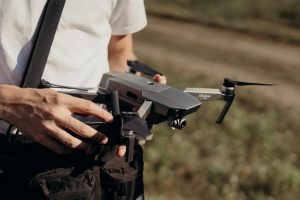
Top Drones for Beginners in 2023
With so many cool drones on the market, knowing which ones are the best for beginners can take time. Here is a list of top and cheap drones with camera for beginners in 2023 that offer a good balance of features and affordability:
- DJI Mavic Mini: This compact and lightweight mini drone with camera is perfect for beginners, with a flight time of up to 30 minutes and a control range of 2.5 miles. Its camera is capable of capturing 1080p video and 12MP photos. It also has GPS/GLONASS positioning for stability and easy control and a built-in stabilization feature for smooth and stable footage. It’s among the most popular choices for hobbyists, vloggers, and content creators.
- Hubsan H107D+: This small and lightweight drone is perfect for flying indoors and outdoors. It comes with a camera that captures 720p video and has a flight time of around 7 minutes. It also has a headless mode and altitude hold for easy control and stable footage.
- Holy Stone HS100D: This drone offers a good balance of features and affordability. It has a 1080p HD camera, GPS, and a flight time of up to 15 minutes. It also features an altitude hold mode, making it easy to fly and control.
- Syma X5C: This drone is a great budget-friendly option. It comes with a 2MP HD camera that captures video and photos and has a flight time of up to 7 minutes. It also features a headless mode, altitude hold, and a 6-axis gyro for stability and easy control.
- SNAPTAIN S5C: Another great budget-friendly option, it’s a lightweight pocket drone with a 720p HD camera and automated drone flights of 7-9 minutes. It also features voice control, headless mode, and altitude hold for easy control and stable footage.
These are just a few top drones for beginners in 2023, and the list needs to be completed. It’s important to note that the best drone for you will depend on your specific needs and budget. Be sure to consider the features and capabilities that are most important to you, and read reviews and compare prices before deciding.
Remember that some drone parachute models might not be available in some regions, and models and prices may change based on new releases and market trends. Starting with a smaller, simpler, and cheaper drone is also essential for a beginner. It can be easier to handle and will allow you to gain experience and skills before upgrading to more complex and expensive drones.

Safety and Legal Considerations
Safety and legal considerations are just as important as the drone itself. Flying a drone can be a lot of fun, but it’s essential to do so responsibly and legally.
- Safety: Always fly in open and safe areas, away from people, buildings, and power lines. Before flying, check the weather conditions, and be mindful of strong winds, rain, and other weather conditions that can make flying dangerous.
- Privacy: Respect other people’s privacy and do not fly over private property without permission.
- Airspace: Be aware of the airspace regulations; some areas are restricted for drone flight, for example, near airports, military bases, and national parks.
- Certification: Depending on the country and jurisdiction, drone pilots may be required to obtain flight certifications or licenses. They should also conform to the drone laws in Virginia and Washington.
- Insurance: Consider insuring your drones for commercial use, as accidents can happen, and it will give you peace of mind to know that you’re covered if something goes wrong.
Following these safety and legal guidelines can help ensure your drone flying experience is safe, legal, and enjoyable. Remember that drone regulations are ever-changing; stay updated with the latest rules and guidelines.
It’s also important to note that while flying a drone can be a lot of fun, it’s important to remember that it is a piece of technology, and as such, it can malfunction, fail or break. Always have the plan to handle such situations, follow safety guidelines, and be mindful of your surroundings.
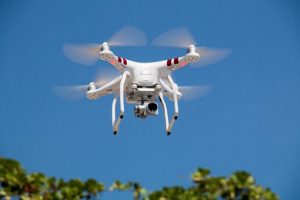
Conclusion
In this ultimate guide, we’ve covered everything you need to know as a beginner to choose the best drone. From understanding the different types of drones and their uses to setting a budget and identifying the features that matter most, we’ve provided you with a wealth of information to make an informed decision. We’ve also discussed the best drones for beginners in 2023 and made recommendations based on your specific needs and budget. Additionally, we’ve touched on the critical safety and legal considerations crucial when flying drones.
By following the information and advice provided in this guide, you’ll be well on your way to joining the ranks of drone enthusiasts and soaring to new heights. Flying a drone requires practice, patience, and following safety guidelines and regulations. Start small with a simple and budget-friendly drone, and as you gain more experience and skills, you can upgrade to more complex and expensive drones.
Flying a drone can be a lot of fun, but it’s essential to do so safely, responsibly, and legally. So, whether you’re looking to capture stunning aerial footage, race with friends, or have fun flying around, you’ll be able to do it all with the right drone. Happy flying!

